The Nikon Coolpix P900 is an ultimate camera for anyone wanting to get closer to their subject. With its insane zoom range of 24-2000mm and 7 fps shooting speed, it is a versatile choice for many types of photography, including wildlife. Let’s take a look at this camera in more detail.
When I offered to review the Nikon Coolpix P900 for Photography Life, I told Nasim I felt like a comedian rooting for Sarah Palin to become president so he’d have four more years of material. C’mon, 24-2000mm zoom combined with a 1:2.3” sensor? The comedic potential seemed endless. But what if it didn’t suck?

A box arrived for me with a Nikon D7200 and P900 in it for review. I went straight for the P900. I’ve got a serious case of telephoto-eyetis and I wanted to see just what this baby could do. I’d never shot with a superzoom point-and-shoot (AKA bridge camera) before and didn’t have any photogeek friends who owned one. To me such a camera was only seen around the necks of tourists at the Grand Canyon. So there was just one thing to do – I grabbed the P900 and headed to the Great Ditch.

Before we jump into the canyon, let’s check out some of the more pertinent and/or compelling features of the P900:
- 83x zoom range 4.3-357mm f/2.8-6.5 lens – a 24-2000mm equivalent. Add digital zoom on top of that and you can get 8000mm equivalent.
- 7 fps burst rate at full resolution, 60 fps and 120 fps burst rates at lower resolution
- Pre-shooting cache – records images before you fully depress the shutter release
- 16 MP Sensor
- Focus Peaking
- 3” LCD tilt/flip monitor
- Electronic View Finder with eye control
- 5-stop Vibration Reduction
- Macro focusing to 1cm
- 18 scene modes including timelapse, bird-watching, easy panorama and moon shot
- and of course wi-fi, GPS, full HD and all that stuff
Lens Performance
Let’s get right into the juicy stuff and check out the zoom range and lens performance. Where else can you get a single lens that can go from this…

…to this:
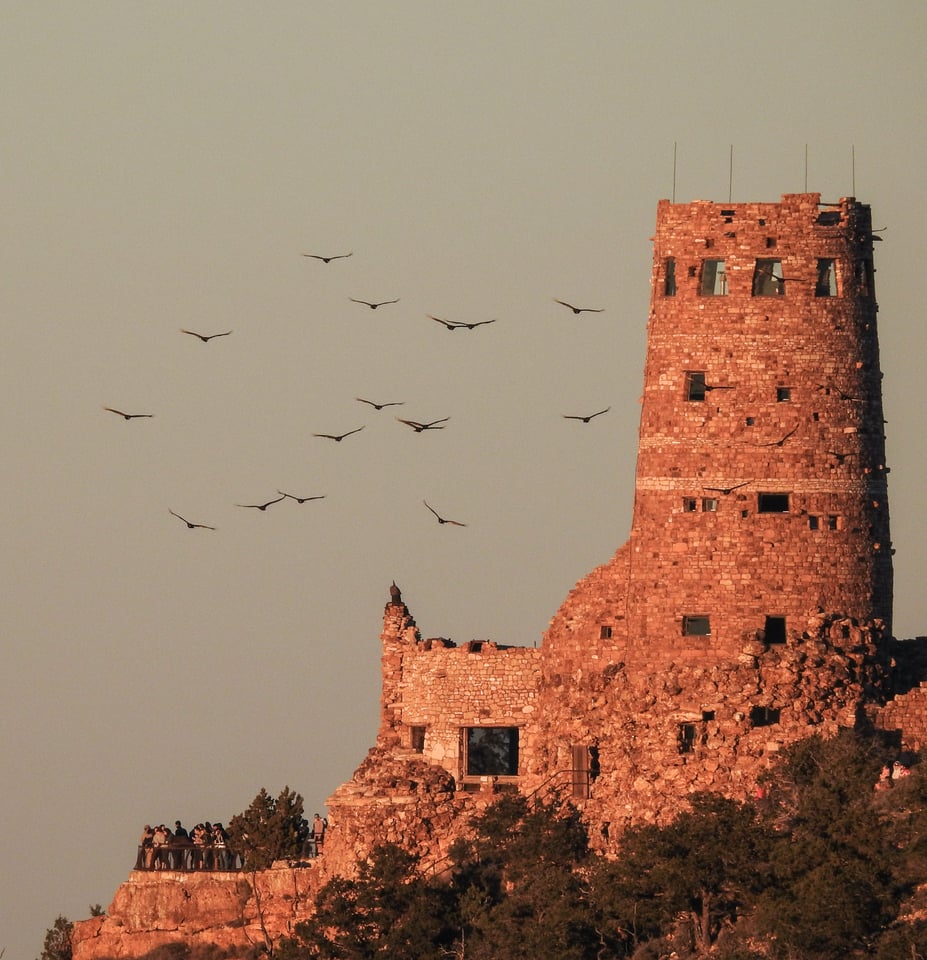
Those are both handheld shots from the same spot and that’s not even the full zoom range. The first is 35mm equivalent and the second is 950mm equivalent (the P900 crop factor is 5.6). This was the view from Navajo Point toward Desert View and The Watchtower. To get an idea of the full zoom range let’s double the distance and go to Lipan Point, 1.8 miles from the Watchtower and slap the P900 on a tripod, set the self-timer to lessen camera shake and take some test shots.








The shots from 24mm to 2000mm equivalent are with the optical zoom. The shot at 4000mm equivalent is with the camera’s digital zoom enabled. Crazy, huh?
At 24-35mm, the corners are definitely soft, but by 55mm this improves a lot and is pretty much gone by 200mm. 500mm looks best to my eye for corner to corner sharpness. By 850mm the corners are softening a tad again, but most shots at this length or longer will likely be wildlife or another subject that likely doesn’t demand or benefit from sharp corners. At 2000mm things get a little soft overall, but bear in mind that we’re talking 2000mm here and shooting through 1.8 miles of atmosphere in a dusty part of the country. Once we go to digital zoom, softness drops a bunch, but even so from two miles away I can tell who’s texting, who’s shooting camera phone pics, who’s got the DSLR, and oooh, I hope that dog’s tail is always up like that.
Overall, the lens from wide to fully optically zoomed is way better than I expected for a lens with such design demands. Any distortion is well corrected (likely with a lot of help from the software). Also bear in mind that any comments as to sharpness are from me resorting to Dummyvision (viewing at 1:1 with my reading glasses on). If I view these at web resolution, they all look pretty decent except for the digitally zoomed 4000mm one. But don’t take my word for it, check out the MTF chart:

Whoops those aren’t the MTF curves, this is actually a rock abstract and judging by the sharpness I’m guessing the MTF chart looks quite a bit better.
Here’s some more at the long end – these are cropped to keep the subject the same size in final output. The 2000mm shot is cropped to about 35% of the original, the 4000mm one is about 70% of the original file, so this final view is equivalent to 6000mm. I did some sharpening and touch-up on these to see how good I could make them look in final output.
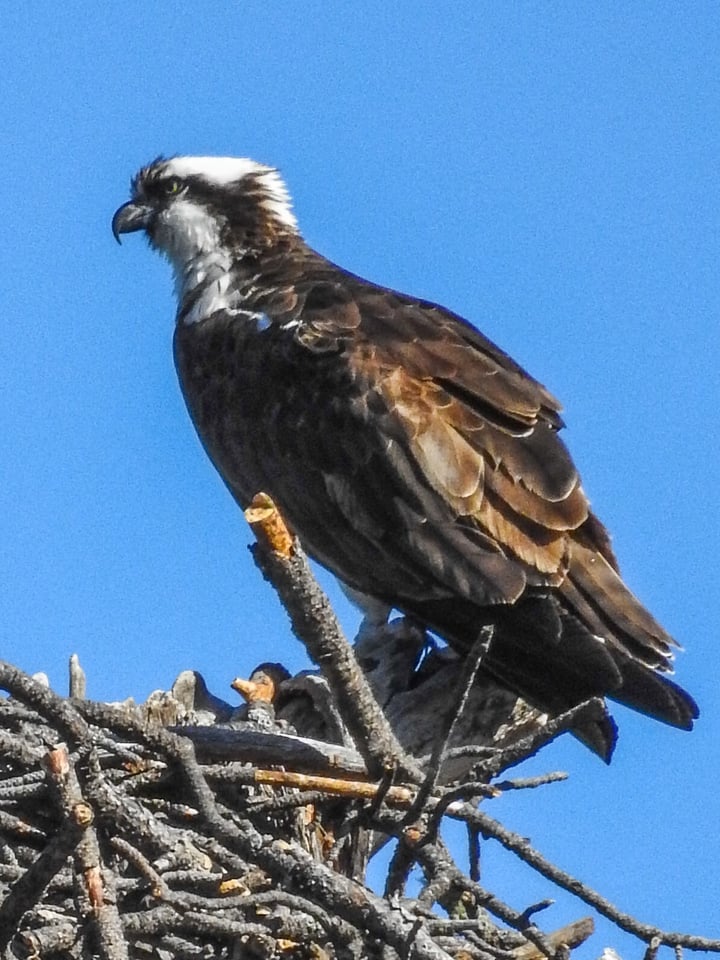

Definitely some noise/pixelation and fine detail could be better resolved, but overall not bad for a $599 camera and certainly good enough for one’s Facebook page. Before all us D810 owners start freaking out, here is the same bird, same final size, shot with the D810 with Nikkor 800mm f/5.6E VR and 1.4x teleconverter cropped and even upsampled a bit to get the same final subject size.

We Win! We Win! We Win! The D810 absolutely clobbered the P900. I’m so delighted and relieved that I spent the extra $21,000.
All supertelephoto lenses, even those costing five figures, have issues when it comes to camera shake, heat shimmers and other atmospheric disturbances.

The softness of this coyote shot is not due to optical imperfection of even digital zooming (this is at 2800mm equivalent) but to late morning heat shimmers.
What about depth of field? The tiny sensor equates to greater depth of field at any given viewing angle.

At 24mm equivalent and f/8 you get everything from inches away to infinity in focus. However at f/8 sharpness is dropping off, likely due to diffraction. However, this is hard to see without Dummyvision.

Here’s an example at f/4.5 and 100% – looks nice and crisp.

Here’s the same lichen at f/8 and 100% – pretty good but not as crisp as the f/4.5 version. I would only shoot the P900 at f/8 if I absolutely needed the depth of field like in the rock slab shot above. Greater depth of field equates to more forgiveness in focusing. The flip side is if you want that super-narrow depth of field look (completely blurred out background) like this…

You need to shoot with a DSLR, preferably full frame like the D600 used for this Avocet shot. You won’t get it with the P900 or any other 1:2.3” sensor camera.
Zooming is power-only and takes 4 seconds to get from 24-2000mm. If you shoot more at one end of the range or another, you can set the start-up zoom position to whatever length you want and when you turn the camera on it will start zooming to that focal length.
The most glaring flaw with this lens is how much flare it suffers from because there is no lens hood and the front element is not recessed.

I needed to block the sun from the lens with my hand – I ended up doing this a lot.


Put the sun in the frame and I got more flare hexes than vultures in my shot. The hexes indicate Nikon used a six-blade diaphragm.
Nikon claims a 5-stop vibration reduction. Not sure about the numbers, but it worked good for me. A tripod worked even better and if you want to utilize the long end of the zoom range (and of course shoot in low light) I recommend one.
When put in close-up mode, Nikon claims the lens will focus to within 1 cm of the subject. However I actually shot Washington’s portrait on a dollar bill with the lens holding the bill flat against a window and it was in focus from about 1.5mm distance (but edges horridly soft).

Besides how easy it would be to bump your subject and/or scratch your lens, being this close can cause the camera shadow to partially block your subject and even make a ring light give a bright donut pattern. I’ve been disappointed with soft macro performance in other point-and-shoots, but when I backed up a little, the P900 did admirably. I really like this next shot.

There’s a bit of softening up and left of the “N” in National Geographic and obvious barrel distortion, but otherwise things look pretty crisp. You can even clearly make out the “void” pantograph, designed to prevent counterfeiters from photoduplicating such checks. So the macro mode won’t pay back for itself that way, but for flowers or bugs where corner sharpness and distortion don’t mean much, it should be fine.
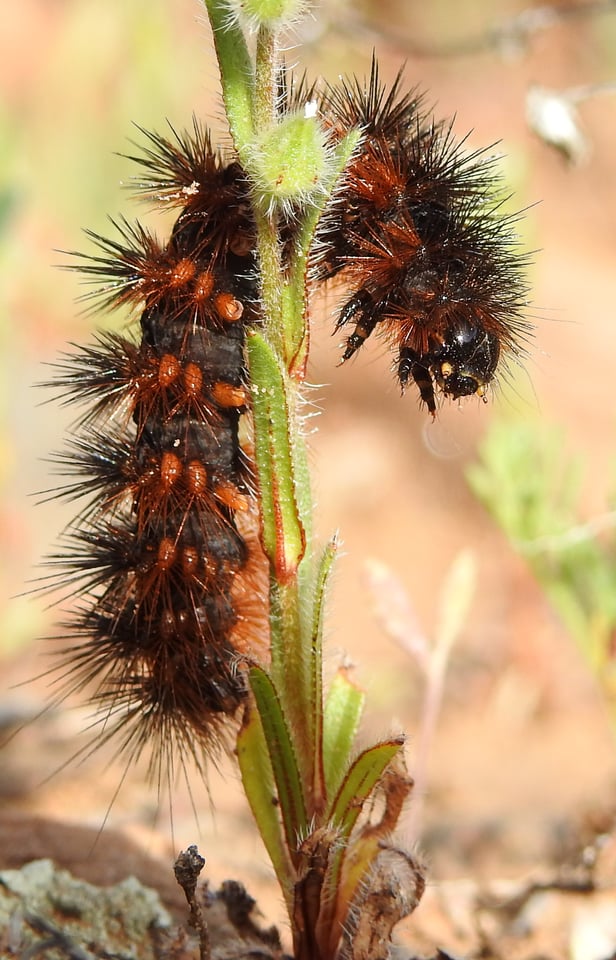
This caterpillar looks very sharp. Even cropped at about 50%. But with the inherent great depth of field of the P900 there’s a bit of distraction in the background.
Here’s another caterpillar. Viewed full frame:

And at 100%:
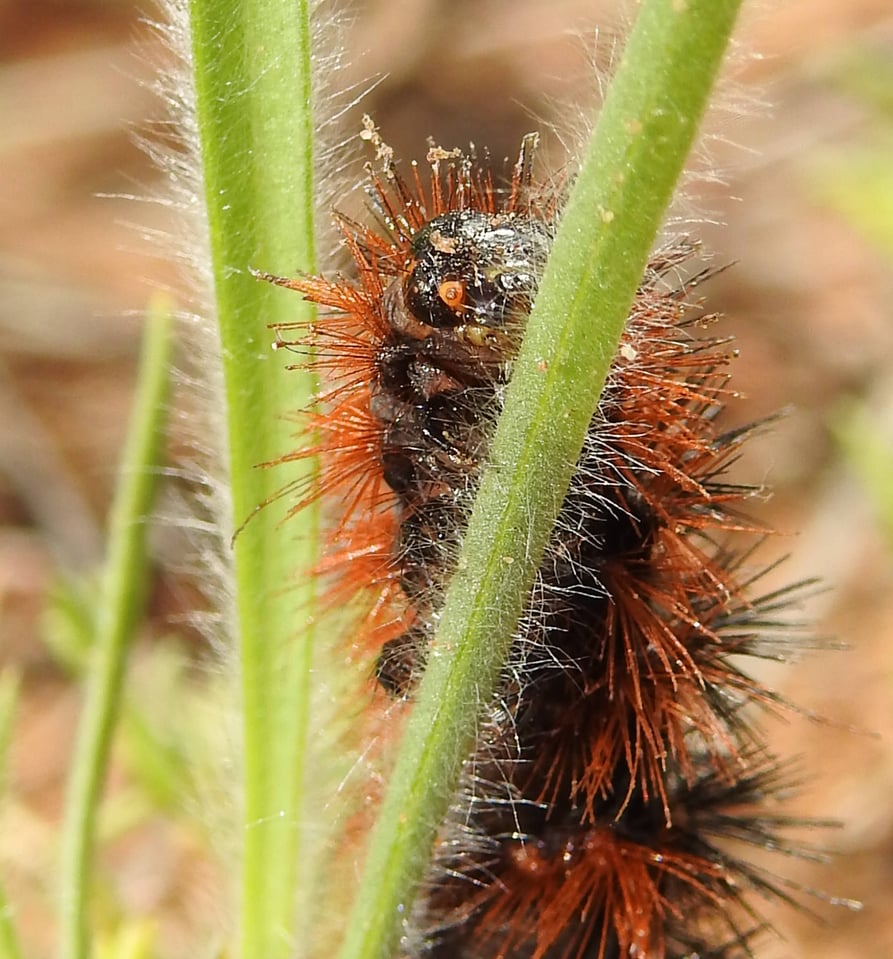
I’m impressed by the sharpness.

Here we see an example of using the greater depth of field to include some background for context.

Here I wanted a simpler background so I used the sky.
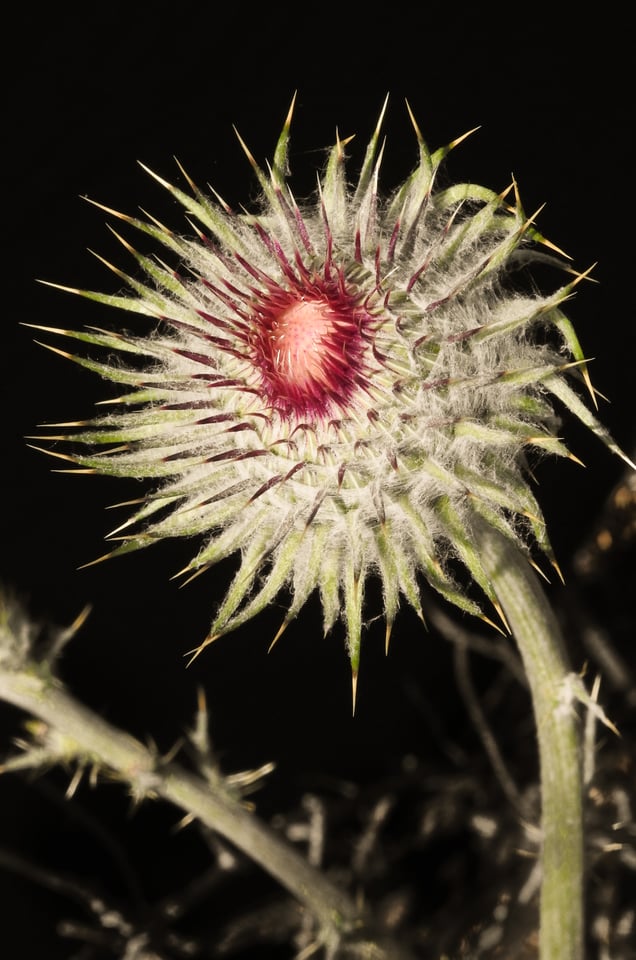
And here I used the black side of my collapsible reflector as my background.

This is about 3”x4” worth of dead prickly pear. At f/6.3 the corners show just a smidge of softness.
Table of Contents